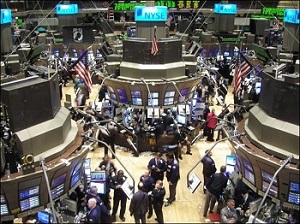By Pam Martens and Russ Martens: August 31, 2018 ~
On August 22 Bloomberg News reported that Goldman Sachs is shuttering two hedge funds run out of Asia with approximately $1.4 billion in total assets. Goldman Sachs isn’t shuttering the funds because the Volcker Rule restricts its ownership of hedge funds but because, according to the report, one Goldman partner running one fund is retiring and the other is starting his own fund.
Yesterday, Bloomberg News reported that JPMorgan Chase’s asset management division is liquidating “a $1 billion credit hedge fund” known as the Palm Lane Credit Opportunities Fund. The article said that “JPMorgan didn’t give a reason for the decision and a spokeswoman for the fund declined to comment.”
A filing by Palm Lane Credit Opportunities Fund on August 24 of this year at the SEC, shows the hedge fund registered offshore in the Cayman Islands, and says its first offering to investors came on July 1, 2012. That was two years after the Volcker Rule’s restriction on hedge fund ownership was signed into law. A Senior Portfolio Manager at the fund has a LinkedIn page stating that the fund invests in “non-directional opportunities in the CLO [Collateralized Loan Obligation], CDS [Credit Default Swap], credit correlation, illiquids and leveraged loan markets” – not exactly the sort of things you want a taxpayer-backstopped bank to be dabbling in.
Americans were led to believe that the Volcker Rule (named after former Fed Chairman Paul Volcker), which was part of the much ballyhooed Dodd-Frank financial reform legislation signed into law by President Obama in 2010, had put an end to giant Wall Street banks holding Federally insured deposits while engaging in high-risk proprietary trading (trading for the house). It also banned depository banks from owning material amounts of hedge funds and private equity funds where speculative trading occurs and where serious losses can be hidden.
So what are these big Wall Street insured depository institutions doing still owning hedge funds with billions of dollars in assets?
Dodd-Frank was signed into law on July 21, 2010. The final interpretive Volcker Rule was not approved until December 2013 and that rule indicated it would not take full effect until July 21, 2015. Federal regulators have been massaging the rule ever since to the point that Wall Street banking powerhouses consider it the equivalent of a gnat on an elephant’s rump.
The thinking behind the Volcker Rule is that banks holding Federally insured deposits, which could make them subject to a taxpayer bailout if they fail, should not be taking high risk gambles while simultaneously having access to a government safety net. Lehman Brothers owned two FDIC-insured banks when it blew up in 2008. Merrill Lynch, at the times of its shotgun marriage to Bank of America during the Wall Street collapse in 2008, owned three FDIC-insured banks. AIG owned the Federally-insured AIG Federal Savings Bank at the time of its insolvency in 2008 because of credit default derivatives it was backing for Wall Street banks. And then there was Citigroup, owner of Citibank, one of the largest insured banks in the country and the recipient of the largest taxpayer bailout in U.S. history from 2007 through 2010 because of its casino culture.
We know that the biggest Wall Street banks assumed from the beginning that they could wiggle their way around the Volcker Rule because just two years after its passage, JPMorgan Chase, the largest depository bank in the nation, was caught gambling in exotic derivatives in London using depositors’ money. It was forced to eventually own up to $6.2 billion in losses from what became known as the London Whale fiasco.
On May 7 of last year, Alistair Gray, reporting for the Financial Times, said that Goldman Sachs was getting waivers from the Federal Reserve over its hedge fund holdings. Gray reported that Goldman “had received an extension for ‘substantially all’ of its investments in $6.2bn worth of so-called legacy covered funds — $4.5bn worth of private equity funds, as well as credit, real estate and hedge funds.”
As these dangerous trends gain serious footholds across Wall Street, once again putting the U.S. economy in jeopardy, what is Congress doing? It’s investigating the wives of Justice Department officials.
Related Articles:
Only Glass-Steagall Can Save the U.S. from Another Epic Crash
Wall Street Bank with Three Felonies Sends Employee to Head SEC Trading Division


